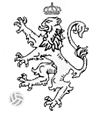
Document | arfsh.com
A document created by arfsh.com for the whole football community
Best centre-forwards: Central Europe 1920s
Author: Isaque Argolo | Creation Date: 2023-01-11 22:41:10
Data providers: Isaque Argolo.
Archive(s): .
There was more tactical richness in Central Europe than in other territories, they created incredibly scientific and ingenious centre-forwards, mainly the Hungarians, who, by the football of Alfréd Schaffer and Kálmán Konrád, implemented a more refined school in Austrian territory. On the Czechoslovakia side, the comparison is not very appropriate with the Austrian and Hungarian players, as the offensive level had dropped drastically as the decade went by. Their style of play, considered way faster than the other two nations, required a specific type of centre-forward; a centre-forward which would fastly send through-balls to the insiders, without carrying the ball too much. Václav Pilát, the perfect example of their offensive football, was already towards the end of his career and Jan Vaník was no longer at the peak of his knowledge as a footballer, although Vaník was still a tremendous centre-forward. However, a young Czech named Josef Silný makes an appearance for the inside trio, and stands out at centre-forward, too. Silný is the first choice here, due to the fact that he reached his peak in the decade. He, moreover, was seen by many as the best centre-forward of the second half of 1920s. As mentioned above, Pilát was no longer the same and Vaník was past his prime. Vaník was nevertheless placed ahead of Pilát in the rankings. VIENESSE QUALITY. Austria went through several transitions during the 1920s, both in the way they viewed the game and in terms of quality in the first half of the decade. In the 1910s, players like Adolf Fischera and Jan Studnicka were Austria's main centre-forwards, with both taking turns and often playing insiders when playing in the same formation — something very similar to what happened between Matthias Sindelar and Friedrich Gschweidl, especially in 1930s. There was a contrast between Fischera and Studnicka. Fischera was a more individualistic player, more of an artist and much more of a dribbler. Fischera follows in the footsteps of José Piendibene and Arthur Friedenreich — that of players who were already ending their careers. Fischera is not disputed here, but it is necessary to mention him. Straight from Hütteldorf, Richard Kuthan stood out in the 1920s as the attack leader of S.K. Rapid. Rigo was not on the same level as Jan Studnicka or Adolf Fischera, but he was a true master of the ball and aligned the offensive actions of the green team very well. Alongside Josef Uridil, Kuthan made an excellent duo; always dangerous for the opposing defensive systems — the same one that was very reminiscent of the synchrony between Václav Pilát and Antonín Janda. This is a more balanced dispute, as the Austrian level fell for most of the decade, but recovered, through Friedrich Gschweidl, already at the end of the decade. Matthias Sindelar, according to himself, even though he reached his peak in the 1930s, was already a great centre-forward in 1927. Kuthan was not at the same level as Gschweidl, who, despite having played several times as an inside forward, was a more outstanding player and also was more consistent. Sindelar comes as third choice. HUNGARY ABOVE ALL. In terms of quality and quantity, no other nation has produced as many centre-forwards as Hungary in this decade. They were genius, exceptional players, molded in the finest knowledge possible, mainly Alfréd Schaffer, Kálmán Konrád and György Orth. Meanwhile, Mihály Pataki, the former great centre-forward of Ferencváros, was yet another splendid name that Hungary had in the 1920s. Later, the talented Jenő Kalmár appeared as another great name, truly György Orth's successor.György Orth Here the choices are very clear: the three oustanding players of MTK. Orth peaked in the first half of the 1920s. He was a different player, very different. With supernatural technical and tactical knowledge, aligned with a vast repertoire of tricks and genius, Orth reached one of the greatest peaks in football history. He was a scary player, he always knew the right move, he was too complete. Schaffer didn't have as many valences as Orth, but even so, Fussballkönig was widely seen as the second best centre-forward on the continent. Schaffer was a scientific player, very technical and with extensive tactical knowledge. He didn't walk or run any more than was necessary. He, moreover, despite having the shot as his main characteristic, became a more creative player, preferring to pass the ball to a teammate than scoring the goal himself. He was very different from the version of him when he wore the colors of MTK Aranycsapat. And finally, Konrad II. was a less dynamic player, much more tactically oriented, always looking to create plays for others to define. Konrad II. didn't go as much on offense as the other four on the offensive line. Between Kálmán Konrád, György Orth and Alfréd Schaffer, Csámi was the least centre-forward of the three, as many experts preferred Konrád II. as inside right. He, however, even before Schaffer arrived at Wiener Amateur S.V., was the team's centre-forward. Later, with his move to First Vienna in 1924/25, Konrád II. returns to the centre-forward position and places the young Friedrich Gschweidl as inside forward. The choice is simple: György Orth, the football genius. Alfréd Schaffer, who had changed his style of play a lot — being a more creative player — follows just below Orth. Kálmán Konrád, despite reaching a very high level in the 1920s, does not belong on the same shelf as the other two mentioned.

AUSTRIA 1# FRIEDRICH GSCHWEIDL 2# RICHARD KUTHAN CZECHOSLOVAKIA 1# JOSEF SILNÝ 2# JAN VANÍK HUNGARY 1# GYÖRGY ORTH 2# ALFRÉD SCHAFFER OVERALL 1# GYÖRGY ORTH 2# ALFRÉD SCHAFFER
© arfsh.com & Isaque Argolo 2024. All Rights Reserved.